If you want to pull proper espresso, you will need to invest at least a few hundred dollars for an espresso machine.
That may be a bit too high of a price tag for people just interested in espresso. It sure was for me.
But then I heard about the mocha pot. Some say that it can be espresso and it’s a much affordable option. So I wondered if it would be a good way to try out espresso
Also some may already have a mocha pot and like the coffee they get out of it. Those might be wondering if it’s worth spending the money too but a proper espresso machine.
Mocha pots are coffee brewers which are widely used in Italy. They use pressure and produce strong coffee. This makes it a seem like potential substitute for espresso machines, but it can NOT brew true espresso.
That being said, mocha pots will get you espresso-like strong coffee. The differences between it and true espresso are the crema, texture, strength and adjustability. Despite the differences, mocha pots will be a good way to try and see if you like will like espresso.
And to sum it up, if you just want to drink espresso, a mocha pot will be sufficient. Only jump into espresso machines if you want a new hobby.
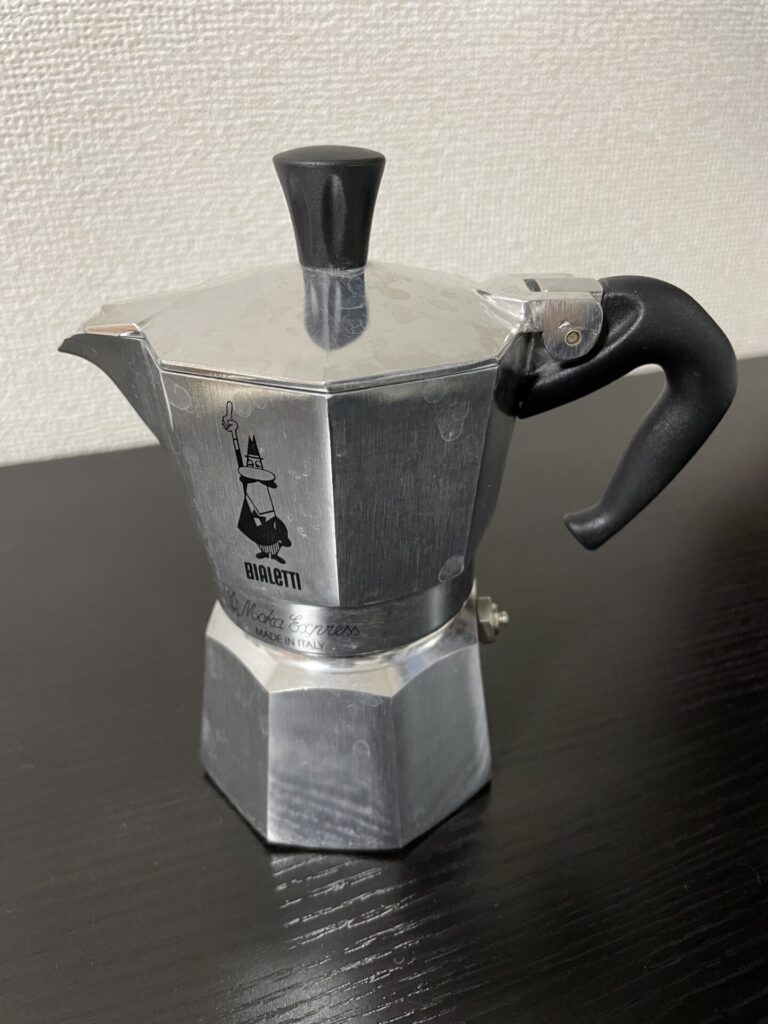
Let me explain in a bit more detail
Differences in extraction
Mocha pots and espresso machines both use pressure during extraction so you may think that they are similar, but in fact they are structurally quite different.
Here is a simple diagram to illustrate the difference
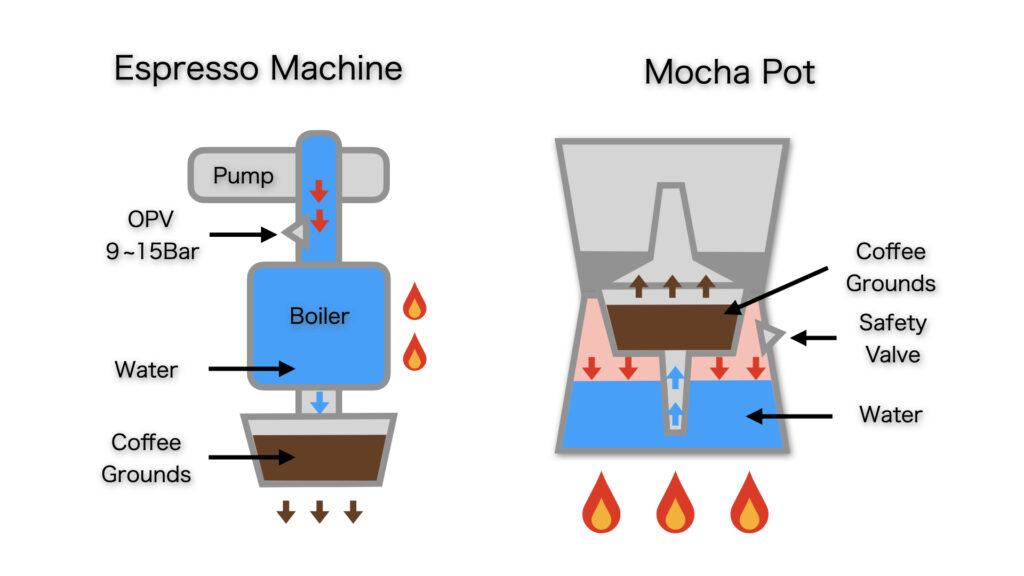
A mocha pot has three chambers, the bottom chamber where the water gets boiled, the middle chamber where the coffee grounds go, and the top chamber which holds the brewed coffee.
The bottom chamber is where the water starts. The chamber gets sealed off when the brewer is put together. When heated the water vaporizes and increases pressure in this chamber. This pressure pushes the hot water up to the middle chamber.
The water pushed up is forced through the bed of coffee grounds and the extracted coffee ends up at the top.

For an espresso machine, the water is heated by the boiler. The temperature is controlled in boiler so that the pressure doesn’t build too much.
When the water is heated to a target temperature, a pump is used to force water into the boiler and out the group head. The pump is what creates the high pressures required for espresso brewing.
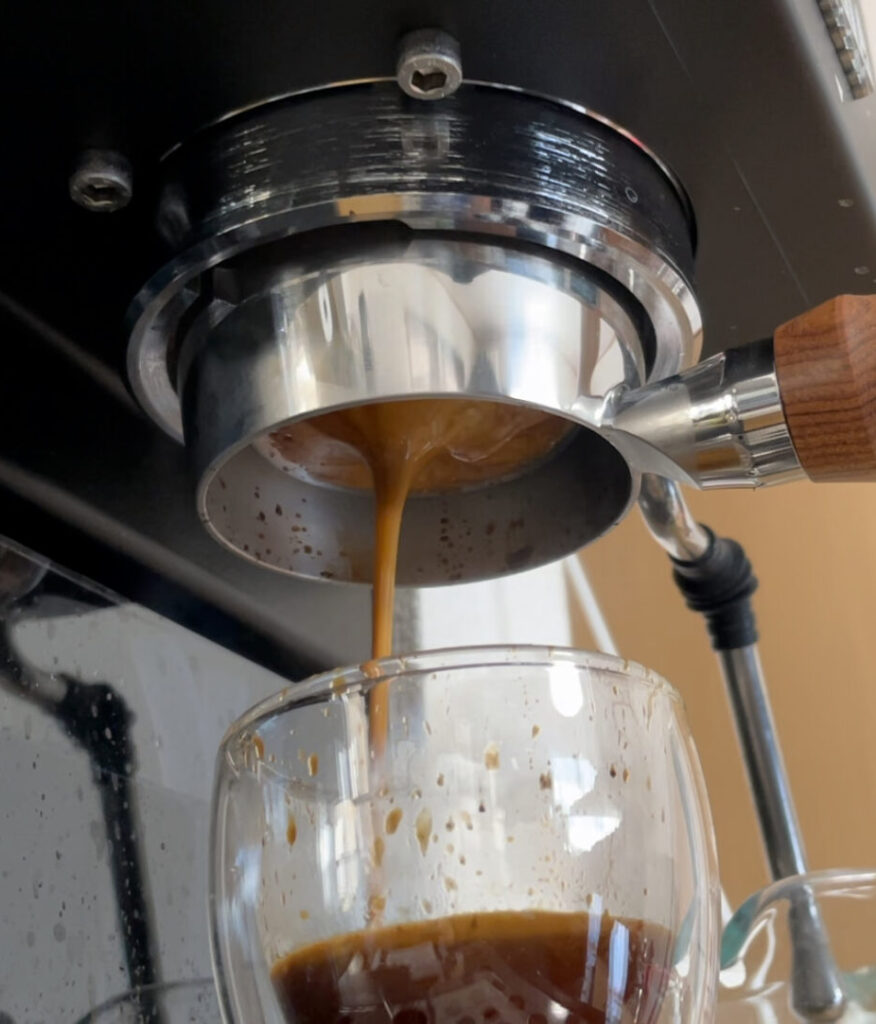
The major differences are the pressure and the temperature.
The pressure created by a mocha pot is about 0.3bars, it’s just enough to push the water up thought the coffee grounds. In comparison, espresso machines use pumps to produce much higher pressures of about 9 ~ 15 bars.
As for the temperature, mocha pots need to boil the water in order to create the pressure required to push the water up, therefore the water will inevitably be near boiling point. Espresso doesn’t rely on the vapor pressures, so technically any temperature can be used. Although typically 90~95℃ will be used.
Espresso uses high pressures to brew strong coffee, where as mocha pots rely on a combination of lower pressure and high temperature to brew its coffee. In general, coffees brewed at very high temperatures tend to get a burnt taste, and you have a higher risk for this with mocha pots.
I think one key disadvantage of mocha pots is that they force you to use higher water temperatures than you would typically want. The difference in the level of pressure also contributes to the difference between mocha pots and espresso.
It would depend on the specific machine, but espresso machines can control the temperature and pressures used. This allows you to do far more adjustments to tweak your coffee. This flexibility is the advantage of espresso machines. (Note that even though this means you can get great espresso, you could also get horrible ones if you have the parameters wrong.)
Differences in the coffee
So that was a lot of theory, let’s talk about the actual cups of coffee they produce.
The left cup is an espresso, the right is coffee from a mocha pot.
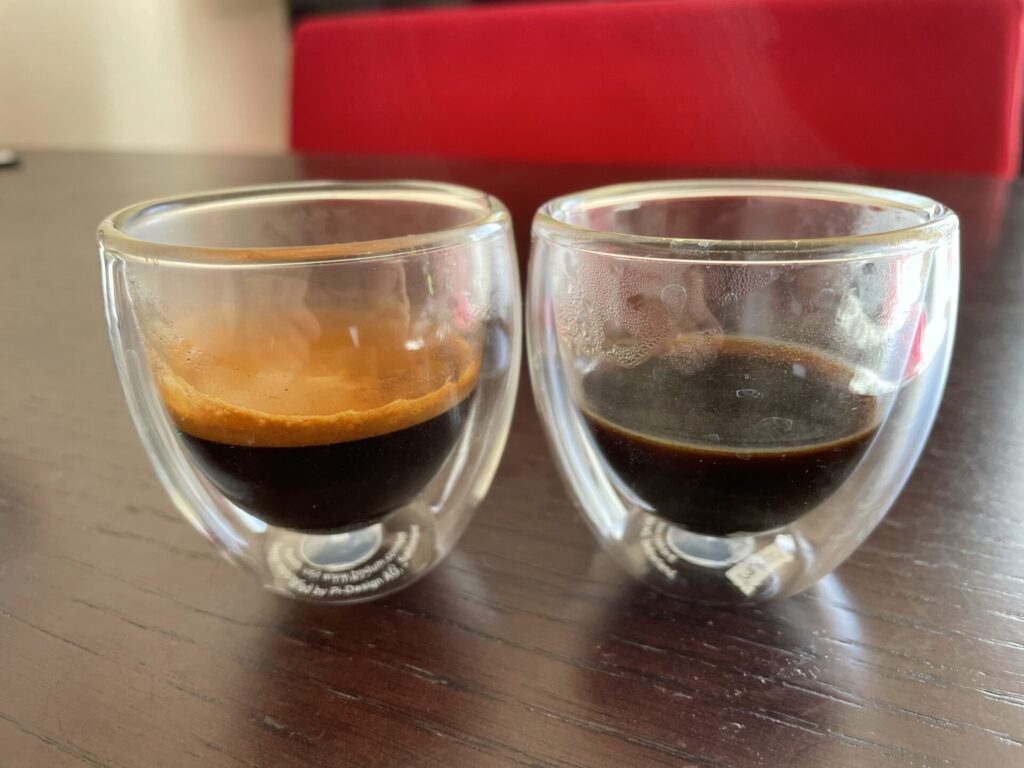
And from the above
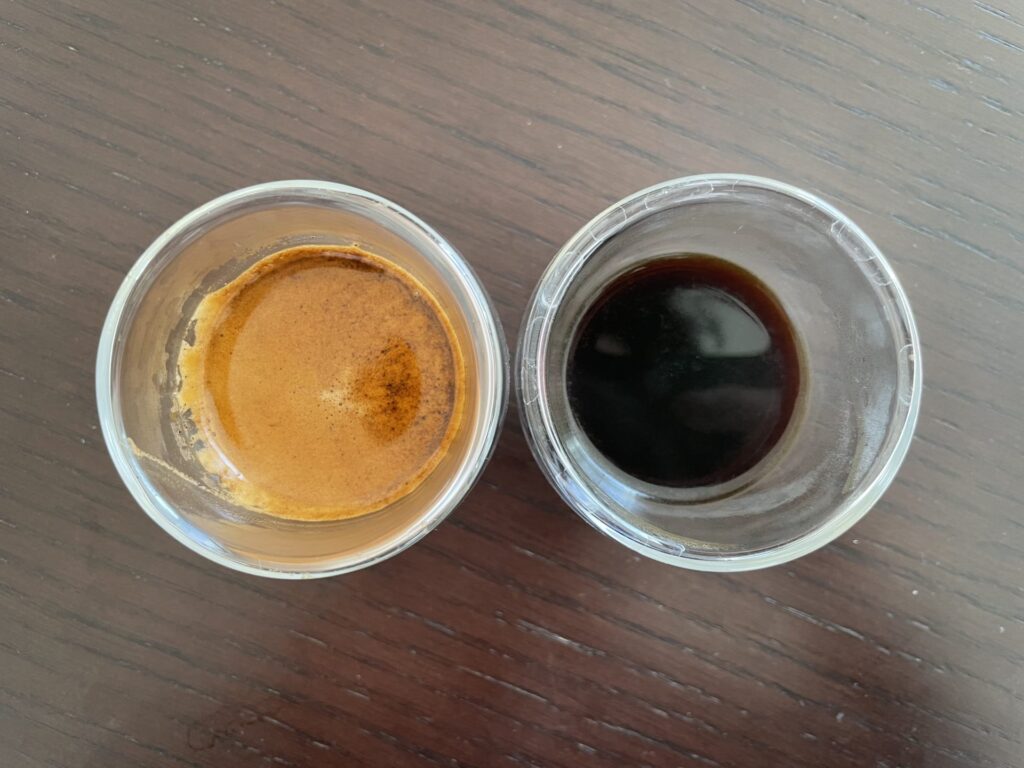
There is an obvious difference with the crema on top of the espresso.
The CO2 contained with in the coffee grounds dissolve into the water/coffee while in high pressures. When the espresso leaves the group head, the pressure is lost and CO2 gets released from the espresso and forms micro-bubbles which is the iconic crema. Crema is sort of like an indicator for the high pressures.
It is just foamed espresso, to crema isn’t necessarily good tasting, but visually it adds a lot of character to the drink.
Tasting the coffee I found a couple of differences.
In terms of the strength, they are simply both strong. I personally could not really feel a big difference in the strength.
By the way the coffee to water ratio I used was pretty much the same. The mocha pot used 9g of beans to 24g out, which is 37.5%. And the espresso used 12g of beans to 31g, 38.7%.
I felt a difference in the textures and the espresso was thicker. This adds a lot to the impact of the drink. This is one of the points which is clearly only present in espresso.
For the taste, the mocha pot seemed like a more rounded taste. The espresso I prepared turned out to have a pretty sharp acidity, and truth be told I preferred the mocha pot coffee in this comparison.
That’s not to say, mocha pots tastes better in general. Both can make great coffee. It’s simply that espresso gives you a lot of flexibility and this time I kind of messed it up.
As one more comparison, I added milk to both.
I added the same amount to both cups to get the same coffee to milk ratio in terms of weight.
Again the left is the espresso, the right is the mocha pot, with milk.
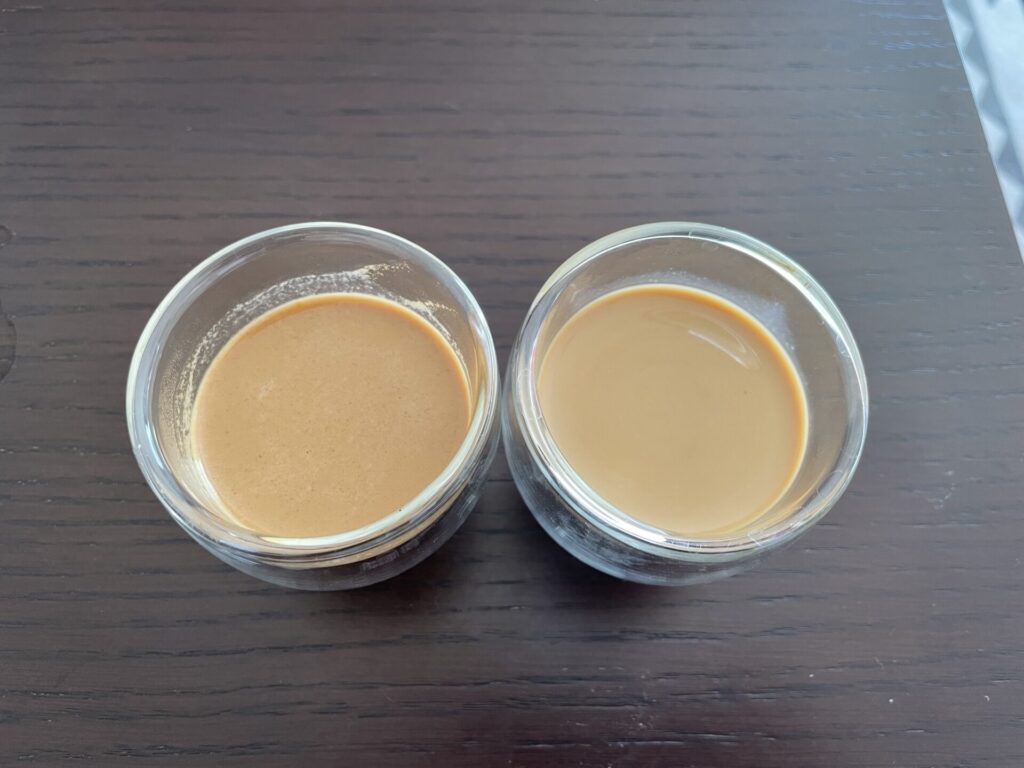
It’s not so clear in the photo, but in person the espresso looks much darker.
And tasting it, the difference is night and day. The espresso has far more coffee flavor. The mocha pot one seems to be overwhelmed with the sweetness of the milk. I could smell the aroma and taste the coffee a lot more with the espresso one.
I didn’t realize how much of a strength difference there was between the cups when I had them straight, but there really is a difference.
To put it in a bit of nerdy wording, the strait cups exceeded my taste’s dynamic range, so both were just strong. But by lowering their intensity by milk, it got back to a range where I could taste a clear difference.
In this sense, it makes sense that milk drinks are much better when prepared with espresso.
Mocha pots are a brewer, Espresso machines are a hobby
To sum it up, I think the major difference between mocha pots and espresso machines are how I think about them.
Mocha pots are a brewer, just a utensil to make coffee. But espresso machines to me are much more. They are a hobby.
I don’t know if this is a good analogy, but it’s kind of like when you want to eat fish, do you just go a buy one, or do you buy a fishing rod.
If you just want to drink coffee, I don’t really recommend getting an espresso machine.
They are expensive, take time to maintain, and you need skill to brew good coffee with them. If you really want an espresso, just go to a local cafe. Much lower cost and you will probably end up with better coffee.
But if you enjoy brewing espresso, I think it will be a great hobby. You can have fun tweaking the brews and enjoy a cup of awesome coffee at the same time. And the more time you spend with it, the better coffee you will get out of it. If you are into pour-overs, I would highly recommend looking in to espresso brewing.


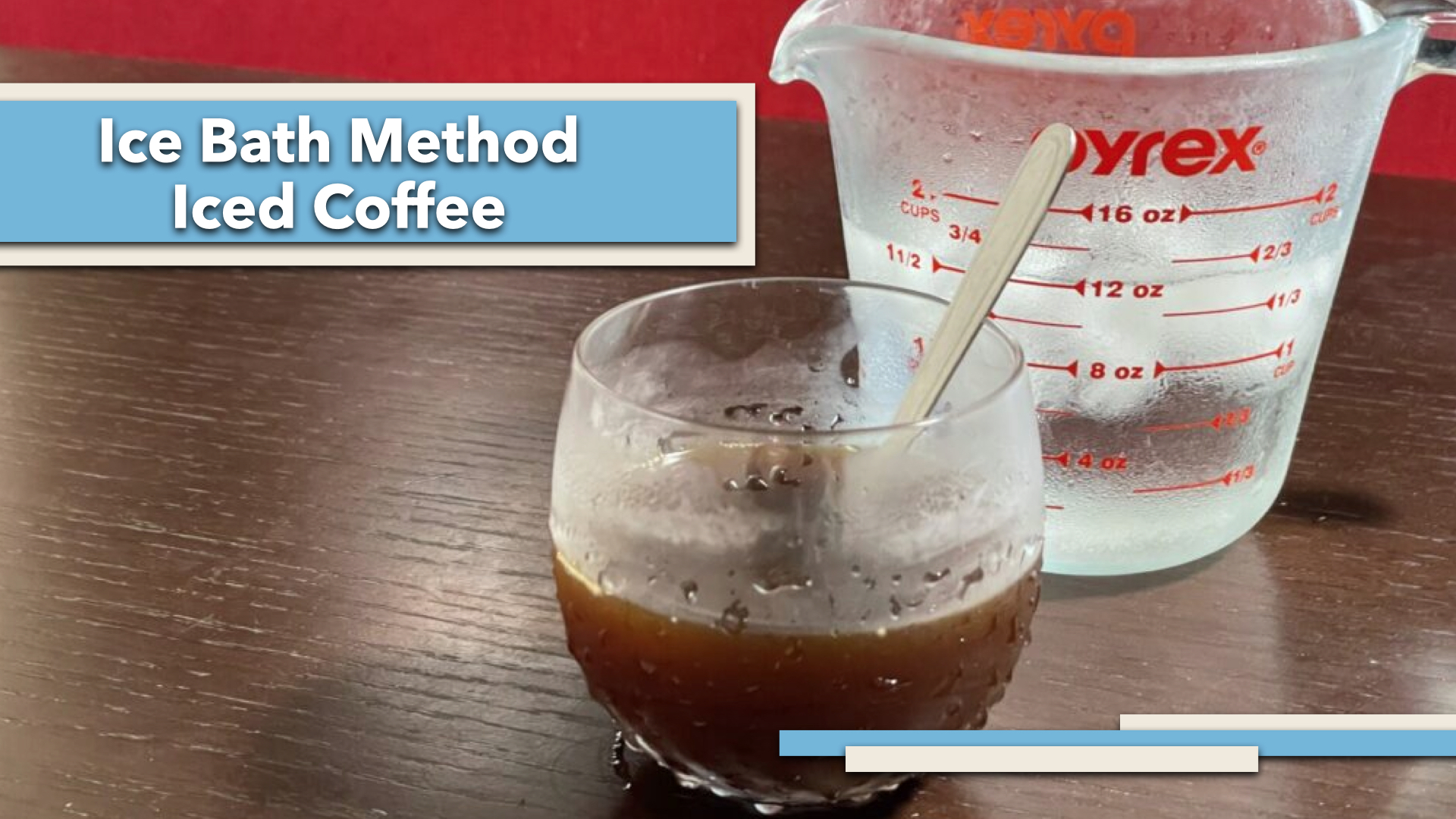

コメント